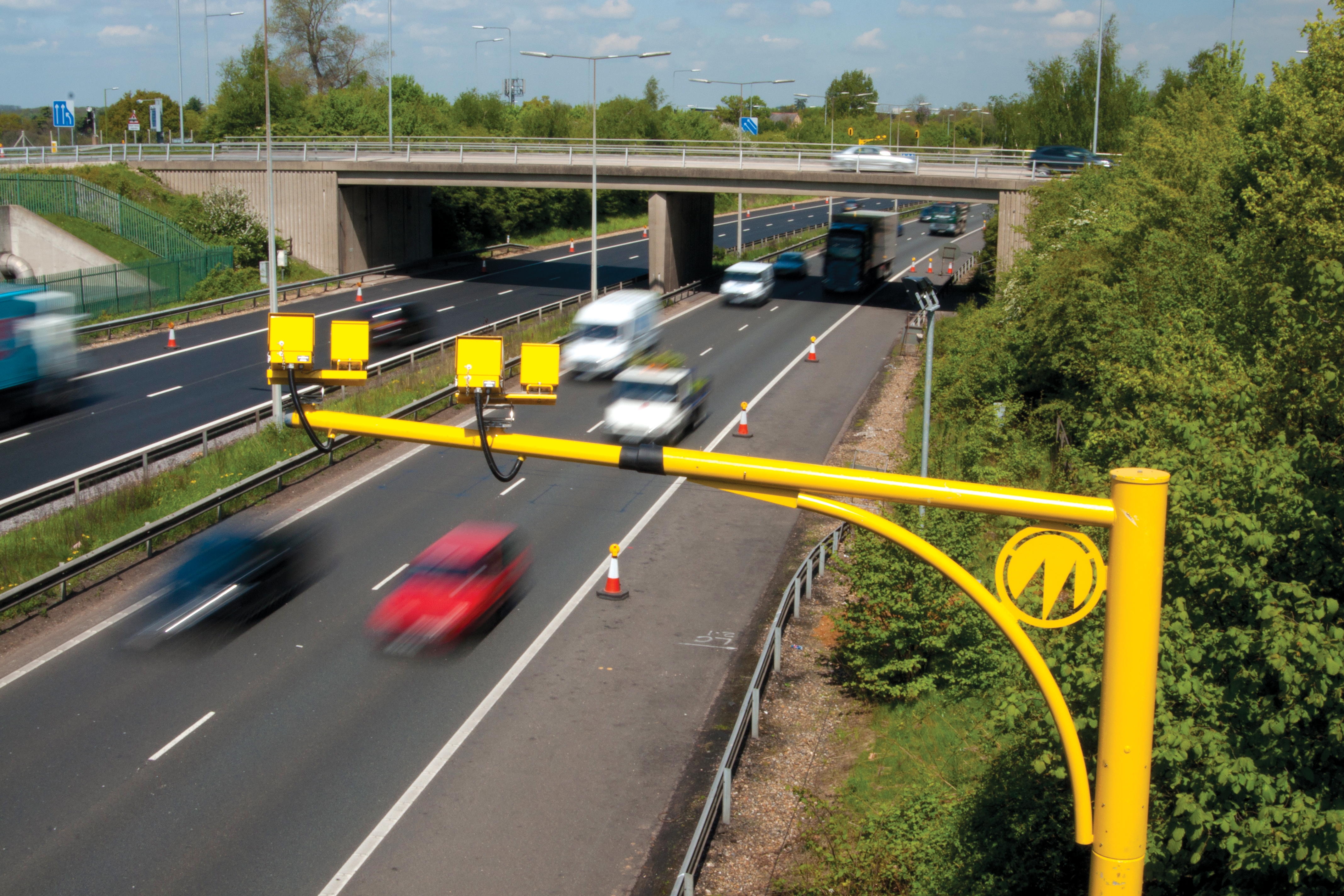Changing needs of mature and emerging economies are demanding more rigorous enforcement services. Gatso’s managing director Timo Gatsonides spells out the challenge to Jason Barnes. As geographical markets mature and saturate, it might seem that the only thing for suppliers to do is to look further afield in search of new opportunities. The automated enforcement market in north western Europe could be a case in point, but Gatso’s managing director Timo Gatsonides begs to differ. The sheer number of new syst

'Yes in my back yard' is becoming more prevalent as residents campaign for safer roads in their local areas
Changing needs of mature and emerging economies are demanding more rigorous enforcement services. Gatso’s managing director Timo Gatsonides spells out the challenge to Jason Barnes
As geographical markets mature and saturate, it might seem that the only thing for suppliers to do is to look further afield in search of new opportunities. The automated enforcement market in north western Europe could be a case in point, but“We still think there is a lot to do to influence public and political opinion,” he says. “In Gatso’s home country, the Netherlands, we’ve recently seen some politicians propose a 10km/h increase in speed limits on strategic roads to 130km/h. Safety organisations have urged a rethink and there’s no doubt that such a move would be costly. Signage would have to be replaced and the public educated. And even once all that’s done, no-one really knows what the effects of such an increase might be.
“It’s not so much that I see things being undone. The challenge is to better inform public opinion. We’ve discussed this with customers around the world and found they are looking for effective ways to better inform the public. Certainly, if along with a citation there was a message, such as: ‘You have to pay €50 and do you know why? At the location where you were speeding ‘x’ number of people have died this year’, we might see the message getting across more. We should perhaps consider violators to be more like customers.”
Lack of complacency
That may be a safer alternative to raising speed limits. Gatsonides is not expecting mature markets to become complacent:“I’m an optimist and I think this situation is temporary. We need to look at more public awareness classes; there may not be great demand for new systems in the more mature markets, but there’s still room for equipment manufacturers to progress. Each has to see itself as an ‘enforcement company’, not just as a systems supplier.”
In emerging markets Gatso and others are already providing an education process – informing ministries and showing how laws need to be changed or instituted. Elsewhere, in the US, where enforcement services are outsourced and violators can go online to pay their fines, Gatso provides information on why they were fined; in Australia, the company is involved in clients’ testing processes and educational programmes. It also supports customers’ efforts to inform the public on why cameras are where they are, how they are calibrated and so on.
“There’s still a lot we can do and we continue to see huge potential in Western Europe, driven in the main by the desire to optimise the whole enforcement chain,” Gatsonides says. “That’s not been embraced everywhere. Southern Europe is effectively a new market for Gatso, although some manufacturers are already active there.”
Emerging economies
At the same time, some of the world’s emerging economies already have a significant level of automated enforcement and are realising that speed reduction is not just about technology. As major infrastructure improvements progress, there are educational programme to consider. “You cannot just say to a roads authority or local government, ‘put a camera here and safety will improve’”, says Gatsonides.“Many developing countries know they have problems of speeding but they don’t truly know how to solve them. There’s a lot of local technology and knowledge in many cases but a lack of solid enforcement chain evidence. Many emerging markets have been using equipment that would never get Type Approval in Western Europe, but significantly, they’re now asking for advice on how to improve their traffic enforcement.
“To an extent, local companies could come up with solutions that do what’s being asked, but I think something like 90% will disappear over the next five years. Manufacturers like Gatso have a lot of knowledge that will continue to be of value in these markets but I don’t feel we and others should feel too safe in our positions; we’ll continue to see competition.”
Changing dynamics
Gatso has recently undergone a rebranding exercise which Gatsonides says is intended to reflect these changing market dynamics, emphasising full solutions of education, public awareness and infrastructure improvements. Transparent government is a growing trend, driven in part by the internet and citizens generally being better informed with ready access to information. This can work to the advantage of automated enforcement. Gatsonides says: “We’re working on some interesting new technologies and information strategies which include more than just the roadside systems and introduce a much enriched back office environment.“The rebranding involves telling governments and customers of our new role. Gatso as a company has changed a lot in the last three to five years. We have companies in the US and Australia which supply complete outsourced enforcement services but we have not communicated that to the rest of the world. We’re working on a next-generation platform ahead of
Technology… plus
Whether in the back office or at the roadside, there are lots of new and interesting technological possibilities which have the potential to change the enforcement market, but Gatsonides questions the pace of acceptance and approval. Using what many would term ‘traditional’ enforcement technologies, it’s already possible to capture almost every type of offence that can cause casualties, so how much really needs to change? “We can add overtaking and so on but statistics show that most offences are in red light running, speeding, not wearing seatbelts and intoxication. Perhaps we should concentrate our efforts there.“I’m a technologist but I don’t think that technology is the problem. If you look at the cooperative vehicle environment, it might be perfectly possible to add applications such as signal pre-emption but there are significant liability issues. How, for instance, do we get police and justice departments to cooperate? Again, acceptance is the issue,” Gatsonides says.
“That could involve the enforcement vendors working together more. I don’t see that happening in the near future but perhaps change will come from a different direction. There are interesting new technologies emerging but if the technology is mature – and there is already a lot of it out there – then the added value is in advice and outsourcing.”
More cooperation is needed between customers Gatsonides says. Multiple systems are being installed in the same place for vehicle presence, count, anti-terror and other applications – by several organisations within the same government when data really ought to be fed from common systems. “There are lots of non-technological issues that need to change to reflect the technology,” he says. “Legislative changes take time but the driver will be efficiency. Digitisation has driven efficiencies at the back end. There’s no reason why that cannot filter through to the front end, but safety has to be the primary goal. Duplication of systems on the road adds bureaucratic complexity which can harm safety.”
“Enforcement? Yes please”
Public perceptions vary from country to country, making it difficult to judge whether the enforcement argument is somehow being ‘won’. It is on decision makers’ agendas, if evidenced by the rise of ‘YIMBYism’.“We’ve had Nimbyism – ‘not in my back yard’. Now we’re seeing yimbyism – ‘yes in my back yard’. As much as people hate getting a ticket, they love the idea of the roads in their local area becoming safer. We’re seeing more citizens’ initiatives where people are campaigning for cameras to be fitted, and such things as ‘FixMyStreet’. I think we’ll see increased reporting of road safety related situations. Push and pull will come from government and the public. Transparency has really improved the situation in some countries, particularly Australia. I’d like to see more of that and more yimbyism as a result.”
Five years from now, outsourcing of enforcement is likely to be far more common. Emerging markets will continue to deploy state-of-the-art technology, with more mature business models, according to Gatsonides. Those convergences will then filter back to some of the more mature markets. “One thing which is much less certain – where things are far less clear – is whether we’ll see more integrated systems and data sharing between government agencies.












